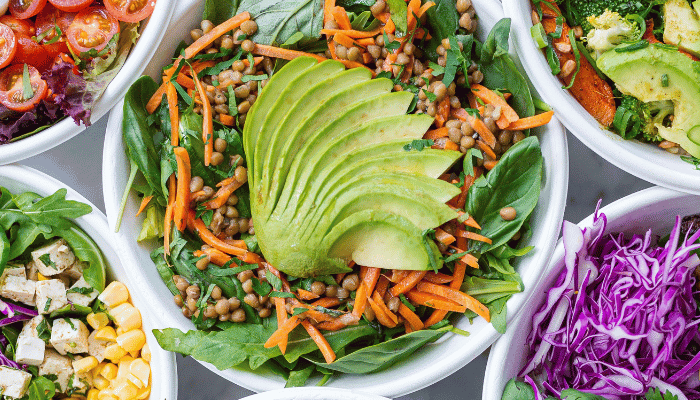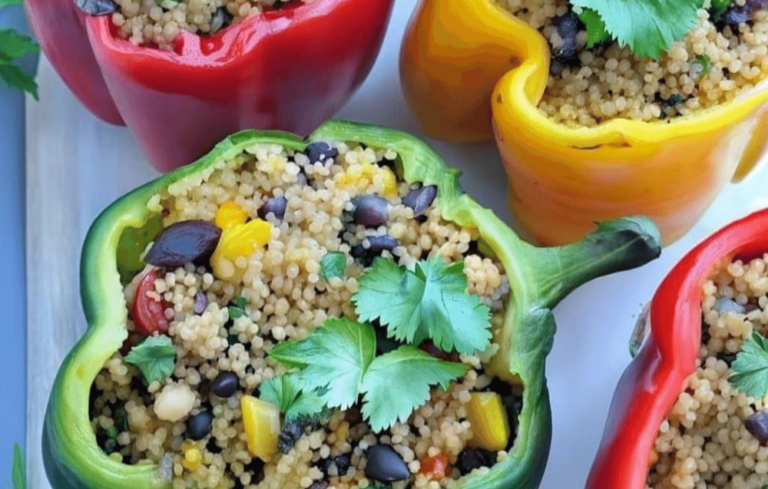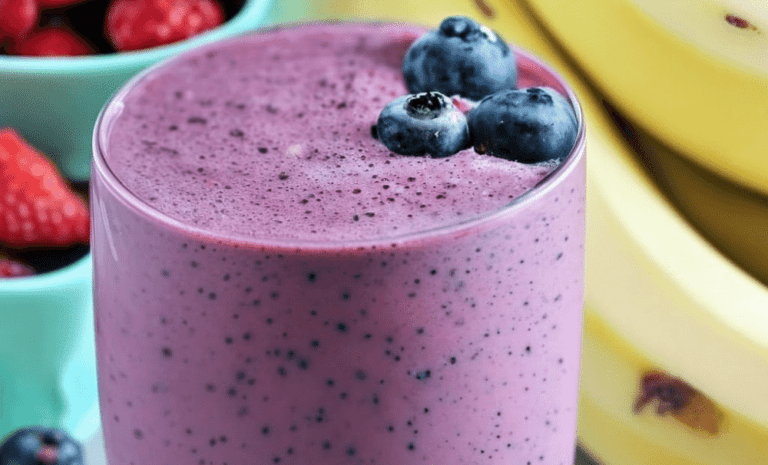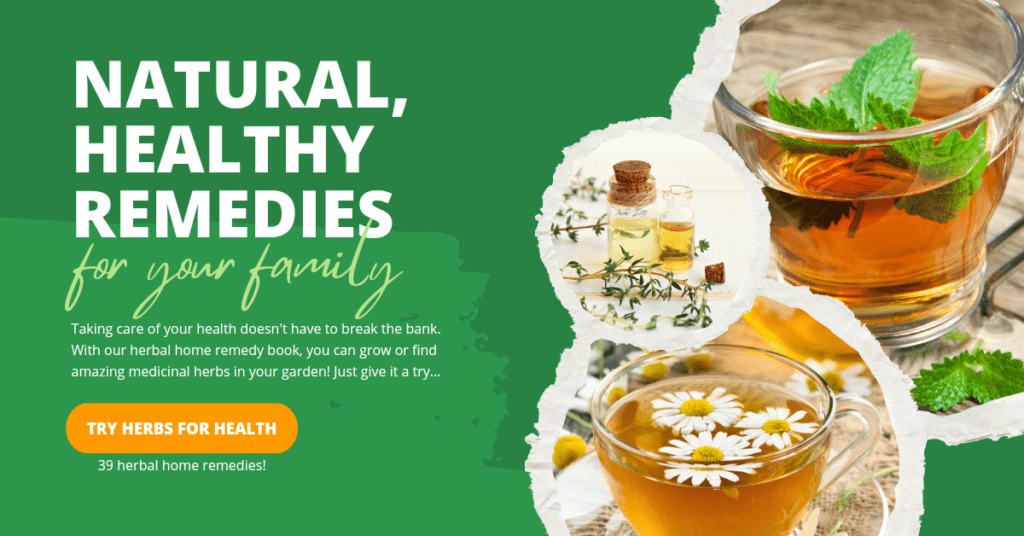
Introduction
Welcome to our latest post where we share easy and nutritious top 5 anti-inflammatory recipes for a healthy lifestyle!
Many of us believe that eating healthily involves complicating our lives with difficult recipes and exotic ingredients. But that’s not always the case.
In this blog post, we want to debunk that myth by sharing ‘5 Easy and Nutritious Anti-Inflammatory Recipes for a Healthy Lifestyle.
This isn’t about depriving your palate or your plate, but presenting vibrant, satisfying meals that you’ll soon be whipping up with ease. So, read on and you’ll soon be excited to try each recipe in your own kitchen.
- Introduction
- Delicious Anti-Inflammatory Buddha Bowl Recipe for a Healthy Meal
- Zesty Garlic and Lemon Anti-inflammatory Salmon Dish recipe
- Quick and Easy Spinach-Kale Salad: Perfect Anti-Inflammatory Recipe for Lunch
- Quinoa-Stuffed Bell Peppers Delight: A Colorful and Nutritious Anti-Inflammatory Recipe
- Delicious Anti-Inflammatory Recipe: Mixed Berry Smoothie
Benefits:
Before we dive into the tantalizing recipes, let’s talk about why they’re so good for you. Anti-inflammatory meals, as the term indicates, help to reduce inflammation in your body. Chronic inflammation is linked to numerous health conditions, including heart disease, diabetes, and arthritis, so controlling it can help maintain your overall health and reduce the risk of multiple diseases.
Not only that, but the ingredients in these recipes are rich in nutrients that support a myriad of bodily functions. For instance, Omega-3 fatty acids in salmon contribute to heart and brain health, while the colorful variety of vegetables in our Buddha Bowl recipe and Spinach and Kale Salad offer high fiber, an array of vitamins, and potent antioxidants that help protect your cells against damage.
And let’s not forget the benefit of great taste! Each of these recipes combines ingredients in a way that’ll delight your taste buds while also nourishing your body. And the best part? They’re all straightforward to make, even if you’re not a seasoned chef.
So, if you’re ready to eat your way to better health, let’s delve into these easy and highly nutritious anti-inflammatory recipes.”
Please note that some of the links in this blog post are affiliate links, inclusive of Amazon Affiliate links. This means that if you click on these links and make a purchase, I may receive a small commission at no extra cost to you.

Delicious Anti-Inflammatory Buddha Bowl Recipe for a Healthy Meal

Benefits:
Turmeric and ginger are both known for their anti-inflammatory properties.
Ingredients:
- 1 cup cooked quinoa
- 1/2 cup chickpeas, drained and rinsed
- 1 small sweet potato, diced and roasted
- 1/2 avocado, sliced
- 1/2 cup red cabbage, shredded
- 1/2 cup carrots, julienned or grated
- A handful of baby spinach
- 1/4 cup cucumber, sliced
- 2 tablespoons pumpkin seeds
- 1 tablespoon hemp seeds
- Fresh cilantro or parsley for garnish
- Lemon wedge, for serving
For the Turmeric-Ginger Dressing:
- 3 tablespoons extra virgin olive oil
- 1 tablespoon apple cider vinegar
- 1 teaspoon turmeric powder
- 1/2 teaspoon ginger powder
- 1 garlic clove, minced
- Salt and pepper to taste
Estimated Nutritional Information per Serving:
- Calories: The bowl is predominantly made up of vegetables and quinoa, with avocado and seeds adding healthy fats. Estimated around 400-500 calories per serving.
- Protein: Quinoa, chickpeas, and seeds contribute to the protein content, approximately 15-20 grams per serving.
- Carbohydrates: Quinoa and sweet potatoes are the primary sources of carbohydrates, totaling around 50-70 grams per serving.
- Fiber: High, due to the presence of vegetables, quinoa, and chickpeas. Approximately 10-15 grams per serving.
- Fat: Mostly from avocado, olive oil, and seeds. Estimated around 20-30 grams per serving, primarily healthy unsaturated fats.
- Vitamins and Minerals: Rich in various vitamins (especially Vitamin A from sweet potato and Vitamin C from vegetables) and minerals like iron and magnesium, thanks to the diverse plant-based ingredients.
Additional Nutrients:
- Antioxidants: The ingredients like turmeric, ginger, garlic, and various vegetables provide antioxidants.
- Omega-3 Fatty Acids: Hemp seeds and pumpkin seeds are good sources.
This Buddha Bowl is not only flavorful but also packed with nutrients that support a healthy, anti-inflammatory diet. However, for precise nutritional values, especially if you’re tracking specific dietary needs, it’s recommended to calculate using the exact brands and quantities of ingredients you use.
Please note that these nutritional values are rough estimates and could vary based on the exact ingredients used and portion sizes. Always consult with a registered dietitian or nutrition professional for the most accurate information.
Zesty Garlic and Lemon Anti-inflammatory Salmon Dish recipe

- 4 salmon fillets (about 6 ounces each)
- 2 tablespoons olive oil
- 4 garlic cloves, minced
- Zest of 1 lemon
- 2 tablespoons lemon juice
- 1 teaspoon dried thyme
- 1 teaspoon dried oregano
- 1/2 teaspoon turmeric powder
- Salt and black pepper to taste
- Fresh parsley for garnish
- Lemon slices for serving
Instructions:
- Marinate the Salmon: In a small bowl, mix together olive oil, minced garlic, lemon zest, lemon juice, thyme, oregano, turmeric, salt, and pepper. Place the salmon fillets in a shallow dish or a resealable plastic bag. Pour the marinade over the salmon, ensuring each fillet is well-coated. Let it marinate in the refrigerator for at least 30 minutes, or up to 2 hours for more flavor.
- Preheat the Oven: Preheat your oven to 400°F (200°C).
- Prepare for Baking: Remove the salmon from the marinade and place the fillets skin-side down on a baking sheet lined with parchment paper or lightly greased foil.
- Bake the Salmon: Bake in the preheated oven for 12-15 minutes, or until the salmon flakes easily with a fork.
- Garnish and Serve: Garnish with fresh parsley and serve with lemon slices on the side.
- Enjoy: Enjoy your zesty and healthy anti-inflammatory salmon dish!
This dish is not only delicious but also packed with anti-inflammatory benefits from ingredients like garlic, lemon, and turmeric. It’s a simple yet elegant meal that’s perfect for both weeknights and special occasions. Enjoy your meal!
Estimated Nutritional Information per Serving:
- Calories: Salmon is moderately high in calories due to its fat content. One 6-ounce fillet is typically around 350-400 calories.
- Protein: Salmon is an excellent source of high-quality protein. Expect about 34-40 grams of protein per serving.
- Fat: Salmon is rich in healthy fats, especially omega-3 fatty acids. Total fat content would be around 15-20 grams, with a significant portion coming from these beneficial fats.
- Carbohydrates: This dish is very low in carbs, with only trace amounts coming from the garlic and lemon. Less than 5 grams per serving.
- Fiber: Minimal fiber, as the primary ingredients are protein-based.
- Vitamins and Minerals: Salmon is rich in B vitamins, Vitamin D, selenium, and potassium. The lemon and garlic also add some Vitamin C and other minerals.
- Additional Nutrients: The omega-3 fatty acids in salmon are known for their anti-inflammatory properties. Garlic and lemon also contribute to the anti-inflammatory benefits of the dish.
It’s important to note that these figures are approximate and can vary based on the exact size of the salmon fillets and the specific ingredients used. For more accurate nutritional information, it’s advisable to calculate using the exact brands and quantities of ingredients you use.
Quick and Easy Spinach-Kale Salad: Perfect Anti-Inflammatory Recipe for Lunch
Benefits:
Spinach and kale are both nutrient-rich leafy greens that help reduce inflammation in the body.
Ingredients:
- 2 cups fresh baby spinach
- 2 cups kale, stems removed and leaves chopped
- 1/2 cup cherry tomatoes, halved
- 1/4 cup red onion, thinly sliced
- 1/2 avocado, diced
- 1/4 cup walnuts, chopped
- 2 tablespoons dried cranberries
- 2 tablespoons extra virgin olive oil
- 1 tablespoon apple cider vinegar
- 1/2 teaspoon honey (optional)
- 1 garlic clove, minced
- Salt and pepper to taste
Instructions:
- Prepare the Greens: In a large bowl, combine the spinach and kale. Toss to mix.
- Add Veggies and Nuts: Add the cherry tomatoes, red onion, avocado, walnuts, and dried cranberries to the greens.
- Make the Dressing: In a small bowl, whisk together the olive oil, apple cider vinegar, honey (if using), minced garlic, salt, and pepper until well combined.
- Dress the Salad: Pour the dressing over the salad and toss gently to coat all the ingredients.
- Serve: Serve immediately, or let it sit for a few minutes to allow the flavors to meld together.
- Enjoy: This refreshing and nutritious salad is perfect for a quick and healthy lunch!
Nutritional Information Per Serving:
- Calories: Approximately 250-300 calories per serving.
- Protein: Around 4-6 grams. The nuts add some protein content.
- Carbohydrates: About 15-20 grams, mainly from the vegetables and cranberries.
- Fiber: High in dietary fiber, around 4-6 grams, thanks to the leafy greens, nuts, and avocado.
- Fat: Healthy fats from avocado, olive oil, and walnuts contribute to about 20-25 grams of fat per serving.
- Vitamins and Minerals: Rich in vitamins A, C, K, and several B vitamins, as well as minerals like calcium, iron, and potassium.
- Antioxidants: Spinach, kale, and cranberries are excellent sources of antioxidants, which are beneficial for reducing inflammation.
Remember, these values are estimated and can vary based on the exact size and proportions of ingredients used. This salad is not only a quick and easy lunch option but also packs a punch in terms of nutrition and anti-inflammatory benefits.
Quinoa-Stuffed Bell Peppers Delight: A Colorful and Nutritious Anti-Inflammatory Recipe

Benefits:
Quinoa-stuffed bell peppers provide the combined benefits of quinoa and bell peppers, offering a nutritious and anti-inflammatory meal that is rich in fiber, vitamins, minerals, and antioxidants.
Ingredients:
- 4 large bell peppers, any color
- 1 cup cooked quinoa
- 1/2 cup black beans, drained and rinsed
- 1/2 cup corn kernels (fresh, canned, or frozen)
- 1/4 cup red onion, finely chopped
- 1/2 cup cherry tomatoes, chopped
- 1/2 teaspoon garlic powder
- 1 teaspoon cumin powder
- 1/2 teaspoon paprika
- Salt and pepper to taste
- 1/4 cup fresh cilantro, chopped
- 1 tablespoon olive oil
- 1/2 cup shredded cheese (optional, for topping)
Instructions:
- Preheat Oven and Prepare Peppers: Preheat your oven to 375°F (190°C). Cut the tops off the bell peppers and remove the seeds and membranes. Set aside.
- Make Quinoa Mixture: In a large bowl, mix the cooked quinoa, black beans, corn, red onion, cherry tomatoes, garlic powder, cumin, paprika, salt, pepper, and cilantro.
- Stuff the Peppers: Drizzle the inside of each bell pepper with olive oil. Spoon the quinoa mixture into each bell pepper cavity, pressing down gently to pack.
- Bake: Place the stuffed peppers in a baking dish. Cover with foil and bake for 25-30 minutes. If using cheese, remove the foil in the last 5 minutes of baking and sprinkle cheese on top. Continue to bake until the cheese is melted and bubbly.
- Serve: Let the peppers cool for a few minutes before serving. Garnish with additional cilantro if desired.
Nutritional Information Per Serving (1 Stuffed Pepper):
- Calories: Approximately 200-250 calories.
- Protein: Around 8-10 grams, mainly from quinoa and black beans.
- Carbohydrates: About 30-35 grams, primarily from quinoa and bell peppers.
- Fiber: High in dietary fiber, around 6-8 grams.
- Fat: Healthy fats from olive oil, about 5-7 grams. If cheese is used, the fat content will be higher.
- Vitamins and Minerals: Rich in vitamins A, C, E, B6, and minerals like magnesium and potassium.
- Antioxidants: Bell peppers and tomatoes are excellent sources of antioxidants, beneficial for reducing inflammation.
These nutritional values are estimates and can vary based on the size of the bell peppers and the exact ingredients used. This dish is not only visually appealing but also offers a wealth of nutrients and anti-inflammatory benefits. It’s perfect for a healthy, satisfying meal.
Delicious Anti-Inflammatory Recipe: Mixed Berry Smoothie

Benefits:
Berries, such as strawberries, blueberries, and raspberries, are loaded with antioxidants that fight inflammation.
Ingredients:
- 1 cup mixed berries (such as strawberries, blueberries, raspberries, and blackberries), fresh or frozen
- 1 banana, sliced
- 1/2 cup Greek yogurt (plain or vanilla)
- 1 tablespoon chia seeds
- 1 tablespoon honey or maple syrup (optional)
- 1/2 teaspoon ground turmeric
- 1/2 teaspoon ground ginger
- 1/2 cup almond milk or any milk of choice
- A handful of spinach leaves (optional)
Instructions:
- Prepare Ingredients: If using frozen berries, allow them to thaw for a few minutes for easier blending.
- Blend the Smoothie: In a blender, combine the mixed berries, banana, Greek yogurt, chia seeds, honey or maple syrup (if using), turmeric, ginger, almond milk, and spinach leaves (if using).
- Process Until Smooth: Blend on high speed until all the ingredients are thoroughly combined and the smoothie reaches your desired consistency. Add more milk if needed to adjust the thickness.
- Serve: Pour the smoothie into a glass and, if desired, garnish with a few berries or a sprinkle of chia seeds.
- Enjoy: Enjoy this nutrient-packed, anti-inflammatory mixed berry smoothie!
Nutritional Information Per Serving (1 Smoothie):
- Calories: Approximately 250-300 calories.
- Protein: About 10-15 grams, mainly from Greek yogurt and chia seeds.
- Carbohydrates: Around 40-50 grams, primarily from fruits and honey or maple syrup.
- Fiber: High in dietary fiber, around 6-8 grams, thanks to the berries and chia seeds.
- Fat: Moderate, about 3-5 grams, mainly from chia seeds and Greek yogurt.
- Vitamins and Minerals: Rich in Vitamin C, potassium, and antioxidants from the mixed berries, and calcium from the Greek yogurt.
- Additional Nutrients: The turmeric and ginger provide anti-inflammatory benefits, and the chia seeds add omega-3 fatty acids.
These nutritional values are estimated and can vary based on the exact ingredients and quantities used. This mixed berry smoothie is not only delicious but also loaded with ingredients that support an anti-inflammatory diet, making it a great choice for a healthy snack or breakfast.
Conclusion
In conclusion, incorporating anti-inflammatory meals into your diet can have numerous benefits for your overall health and well-being. The recipes we’ve shared, such as the Turmeric-Ginger Buddha Bowl, Salmon with Garlic and Lemon, Quick and Easy Spinach-Kale Salad, Mixed Berry Smoothie, and Quinoa-Stuffed Bell Peppers, offer a combination of delicious flavors and powerful anti-inflammatory ingredients.
By choosing to include ingredients like quinoa, kale, salmon, spinach, turmeric, ginger, and berries, you’re fueling your body with nutrient-dense foods that can help reduce inflammation, support immune function, and provide essential vitamins and minerals. These meals not only contribute to your physical health but can also tantalize your taste buds and leave you feeling energized and satisfied.
So why not make a few changes in your meal planning and try incorporating these easy, nutritious, and anti-inflammatory recipes? Your body will thank you for it in more ways than one. So go ahead, unleash your culinary creativity, and enjoy the journey towards wellness, one delicious bite at a time. Happy cooking!

The recipes provided on this blog are for informational and entertainment purposes only and should not be construed as professional culinary advice. The author of this blog is not a licensed dietician or nutritionist and cannot provide specific dietary or health-related guidance. It is the responsibility of the reader to evaluate the suitability of the recipes for their individual dietary needs and preferences, consult with qualified professionals if necessary, and exercise caution when preparing and consuming the dishes.
While the author has made every effort to ensure the accuracy and completeness of the recipes provided in this blog, it is possible that errors or omissions may exist. The author assumes no responsibility for any adverse reactions or health consequences resulting from the use of these recipes. Any reliance on the information provided is solely at the reader’s own risk.
The author encourages readers to seek additional resources, including reputable cookbooks, culinary websites, and professional chefs, to expand their culinary knowledge and skills.
By accessing and using this blog post, you acknowledge and agree to the terms of this disclaimer.

